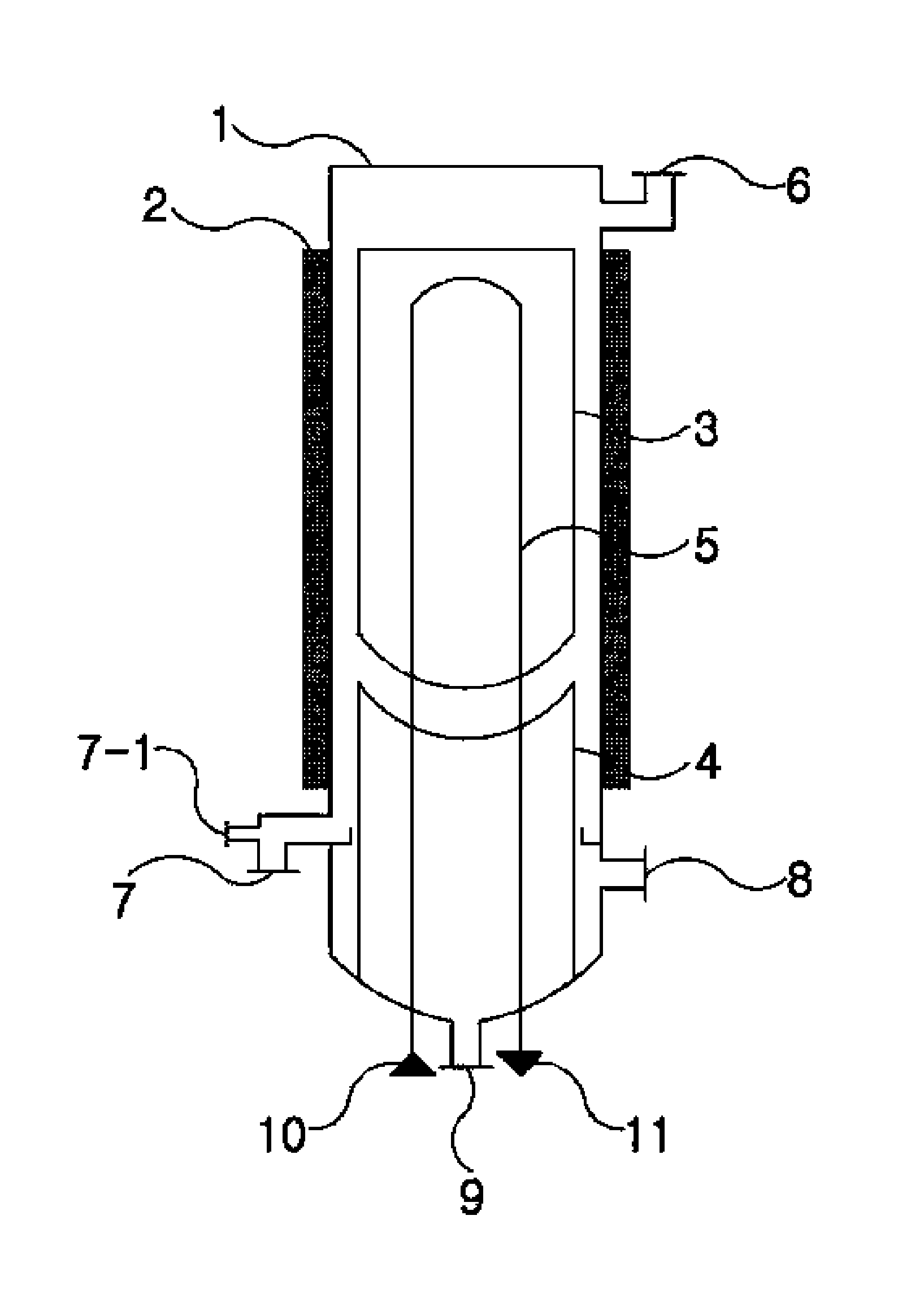Method for preparing high-purity anhydrosugar alcohol using sequential combination of thin film distillation and short path distillation
a technology of anhydrosugar alcohol and short path distillation, which is applied in the direction of molecular distillation, separation process, evaporation, etc., can solve the problems of low conversion rate, low yield of distillation and purification, and high cost of catalyst used in dehydration reaction, so as to achieve high purity and easy production of anhydrosugar alcohol. , the effect of high distillation yield
- Summary
- Abstract
- Description
- Claims
- Application Information
AI Technical Summary
Benefits of technology
Problems solved by technology
Method used
Image
Examples
example 1
[0050]10,000 g of sorbitol powder (D-sorbitol, Samyang Genex Inc.) was fed into a batch reactor equipped with an agitator and melted by heating to 110° C. 100 g of sulfuric acid (Duksan Chemical) and 42 g of methanesulfonic acid (Duksan Chemical) were added thereto, and the reactor was heated to about 140° C. Dehydration reaction was conducted under a reduced pressure condition of about 30 mmHg to convert sorbitol to anhydrosugar alcohol. After the dehydration reaction was completed, the reaction mixture was cooled to 110° C., and about 300 g of 50% sodium hydroxide solution (Samjeon Pure Chemical) was added thereto to neutralize the resulting reaction liquid. The resulting neutralized liquid was set to be at 100° C. and then concentrated under a reduced pressure condition of 40 mmHg or less for 1 hour or longer to remove the moisture and low-boiling-point substance present in the resulting liquid. After the neutralization and moisture removal were completed, the resulting liquid wa...
example 2
[0054]The resulting liquid of conversion obtained after the neutralization and moisture removal in Example 1 was fed into the external condenser type, wiped-film evaporator, and subject to the first stage distillation under conditions of 185° C. of distillation temperature and 1.3 mmHg of evaporator inside pressure. The resulting distillate of the first stage distillation was then fed into the internal condenser type, short-path evaporator having the structure shown in FIG. 1, and subject to the second stage distillation under conditions of 100° C. of distillation temperature and 0.01 mmHg of evaporator inside pressure. At that time, the distillation was conducted by connecting a vacuum pump to the vacuum line, and additionally to the branch line for vacuum formation of the output line for distillation residue.
[0055]The isosorbide obtained through the two-stage distillation showed the purity of 98.2% and the color of pale yellow with the distillation yield of 95% or higher (about 95...
example 3
[0056]The resulting liquid of conversion obtained after the neutralization and moisture removal in Example 1 was fed into the external condenser type, wiped-film evaporator, and subject to the first stage distillation under conditions of 185° C. of distillation temperature and 1.3 mmHg of evaporator inside pressure. The resulting distillate of the first stage distillation was then fed into the internal condenser type, short-path evaporator having the structure shown in FIG. 1, and subject to the second stage distillation under conditions of 170° C. of distillation temperature and 5.0 mmHg of evaporator inside pressure. At that time, the distillation was conducted by connecting a vacuum pump to the vacuum line, and additionally to the branch line for vacuum formation of the output line for distillation residue.
[0057]The isosorbide obtained through the two-stage distillation showed the purity of 98.2% and the color of pale yellow with the distillation yield of 95% or higher (about 95....
PUM
| Property | Measurement | Unit |
|---|---|---|
| temperature | aaaaa | aaaaa |
| pressure | aaaaa | aaaaa |
| temperature | aaaaa | aaaaa |
Abstract
Description
Claims
Application Information
 Login to View More
Login to View More - R&D
- Intellectual Property
- Life Sciences
- Materials
- Tech Scout
- Unparalleled Data Quality
- Higher Quality Content
- 60% Fewer Hallucinations
Browse by: Latest US Patents, China's latest patents, Technical Efficacy Thesaurus, Application Domain, Technology Topic, Popular Technical Reports.
© 2025 PatSnap. All rights reserved.Legal|Privacy policy|Modern Slavery Act Transparency Statement|Sitemap|About US| Contact US: help@patsnap.com

